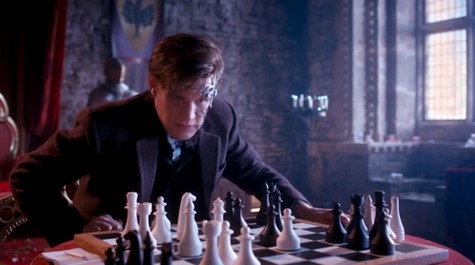The Doctor had a full house for this episode: the Cybermen came back, and Warwick Davis was one of the special guest stars, so… did “Nightmare in Silver” do as promised? Did Neil Gaiman make the Cybermen scary again? Did the Cybermen need to be scary again?
And why do those things on everyone’s faces look like Borg implants?

Quick recap: the Doctor takes Clara and the kids who she nannies (Angie and Artie) to an amusement park on another planet in the future. There they find that the Cybermen have been defeated a long time ago, and that there are shells of them in the park. But there are also Cybermites, and it turns out that the Cybermen—these are a combo of our universe’s Cybers from the planet Mondas and the Cybermen of Pete’s World—have been rebuilding themselves. They partially convert the kids, and then try to convert the Doctor. The Doctor ends up having to battle the Cyber-Planner in his head by playing a game of chess for control of his mind, telling Clara to keep the military force on the planet from blowing it up to prevent the Cybermen from spreading across the galaxy again. He wins the chess game, and Porridge (Warwick Davis) reveals himself to be the Emperor, activating the big bomb and teleporting everybody off world before the planet blows. The Cybermen appear to be defeated, though we see a stealthy ship reach the detonation site, so we’ll see them again, of course.
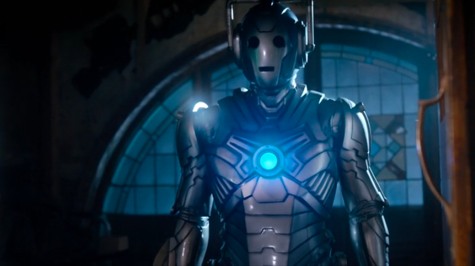
Let’s start with the good: the Cybermen look a little more sleek, and now they can move quickly, which is a pretty nice upgrade and a good way of making them more formidable. Unfortunately, the Doctor doesn’t make any bones about the change because he’s sort of tied up through the episode. Warwick Davis gives his all with any script you hand to him, so he’s a bright beacon in an episode where he is otherwise woefully underused. Matt Smith turns in a hell of a performance, snapping back and forth between the Doctor and the Cyber-Planner with a Jekyll-and-Hyde smoothness that he’s clearly enjoying. If most of the story had featured the Doctor battling for his own mind, this might have been one of the most memorable episodes Who has handed over in a long while.
There are a lot of clever aspects to the episode that unfortunately get mushed up in the execution. It’s a fun concept to have the battle against the Cybermen in a theme park, but jumping between that, talks of the war against them, the Doctor’s chess game, and the reveal of Porridge’s identity makes the pacing of the episode awkward. In addition, bringing in Clara’s charges seems such a random choice, and makes one wonder if they were always intended to be in this second-to-last episode. And if they were requested for use by Gaiman—why was their research on Clara suddenly wedged in by a Moffat-penned scene at the end of “The Crimson Horror”? If the Doctor is Clara’s sole mystery right now, why agree to take the kids along at all? Why were they not told to go back to the TARDIS the second things got dangerous? It would make sense for them not to listen, but to leave them in a place where the Doctor first spotted the Cybermites seems so willfully ignorant on his end, it’s almost as though he wanted them caught.
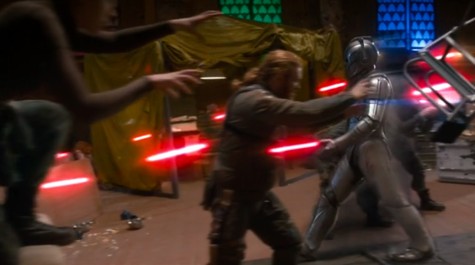
Then there is the fact that outside of speed and a shiny new casing, the Cybermen seem to have been effectively turned into one of Star Trek’s favorite villainous races—the Borg. (Who you could argue were a rip-off of the original Cybermen in the first place!) Even the implants created by the Cybermites that the Doctor, the park’s resident tramp Webley, and the kids receive look like Borg implants, the sort that we see on Captain Picard during his time as Locutus. Whereas the threat of the Cybermen used to be about uniformity, the erasure of identity into an established Cyberman template, the new threat they pose comes from their ability to assimilate the unique traits of other species (or at least attributes of their minds).
The morality that is usually at the core of New Who seems to be getting a pass this season; in the previous episode, we see the Doctor simply make a face when Ada smashes an alien lifeform that he had planned on depositing in another era for everyone’s safety. In this episode, it’s Porridge who thwarts the Doctor’s plan to end the situation peacefully (or at least without blowing up the planet). Still, plenty of people die in this episode, and at the end we find out that the Emperor had the ability to stop the whole fight from ever taking place—if he had set the bomb to detonate, his ship would have picked everyone up right at the start. The only reason he didn’t do it is because he’s been in hiding, avoiding his throne ever since he chose to destroy an entire galaxy in the previous war against the Cybermen. So his desire to keep clear of his responsibilities results in more death, and at the end no one says a word about it. No one calls him on the decision, points out that he is entirely to blame for anyone who was harmed yet again. Which is exactly the sort of thing you would expect the Doctor to do, even if he can relate to the Emperor’s position following his acts in the Time War. Especially because he can relate to him.
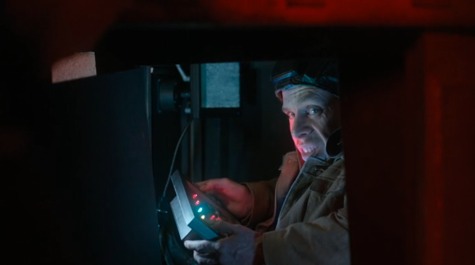
But the greatest missed opportunity in my mind came in the form of those oddly-placed children, who had the chance to be entirely relevant in this episode. Because fans of Classic Who could never forget what occurred the last time the Doctor put children in arms reach of the Cybermen—
He lost Adric.
It is the most prominent death of a companion in the show’s history, and it happened to a fifteen year old boy. Plenty of fans may have found the character irritating (much in the way that Trek fandom maligns Wesley Crusher), but the affect of his loss has always been a major point of the Doctor’s journey. And here we are with those same old Cybermen from the planet Mondas, and there are children in their line of fire, and the Doctor could see the very same thing happen all over again… and it isn’t ever addressed. He doesn’t make mention of it, not a word, or a throwaway line, or a tormented rant. It was the perfect call for it, an emotional battering ram that could have formed the core of the episode, and it was never even considered.

So in the end, “Nightmare in Silver” offered some greats ideas, but didn’t linger long enough on any of them to make this another “The Doctor’s Wife.” I suppose we’ll have to wait for our next episode of running Cybermen to see how this new breed fares.
Interesting Notes to Keep in Mind:
- The Doctor has battled someone using chess before in the Seventh Doctor serial “The Curse of Fenric.”
- The Cyber-Planner was initially featured in two Second Doctor stories “The Wheel in Space” and “The Invasion.”
- Wiping out the Cybermen is a solution used often in episodes where they are featured, and has been used in at least three Classic Who serials before.
- The Cybermites were a very cool updated version of the Cybermats that we have seen before.
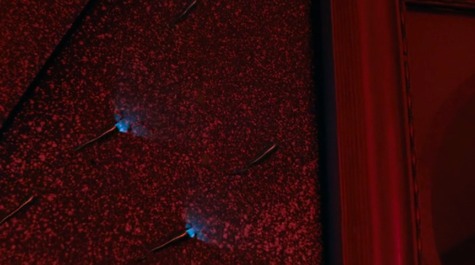
- Using gold on Cybermen was a prominent point in “Earthshock,” the serial where Adric died—he had a maths badge made with gold that they used against the Cybermen.
Clara Theory Corner:
- No clues in this episode, really, aside from the fact that she takes to leading a military unit like she’s done it all her life. Bad characterization or foreshadowing?
Emmet Asher-Perrin would like her own Cybermite. You can bug her on Twitter and read more of her work here and elsewhere.










